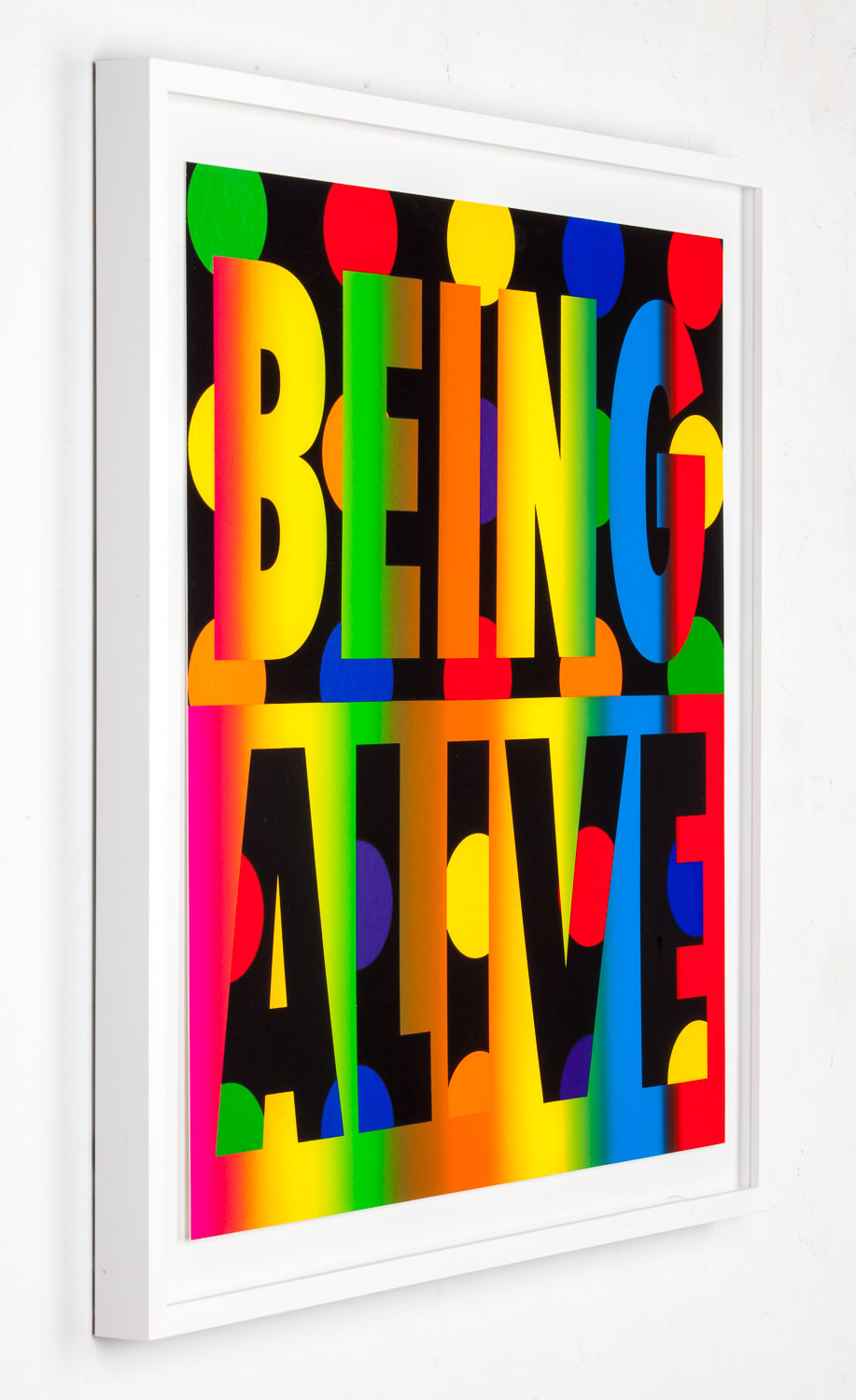-
Artworks
Deborah Kass
Being Alive, 20129-color silkscreen and color blend on 2-ply museum board24 x 24 in
61 x 61 cm#35 of 607441Courtesy the Artist and Kavi GuptaFurther images
This painting belongs to a series of work Deborah Kass began in the aftermath of the contentious Presidential election in 2000, as well as the ensuing terrorist attacks on the...This painting belongs to a series of work Deborah Kass began in the aftermath of the contentious Presidential election in 2000, as well as the ensuing terrorist attacks on the United States in 2001 and resultant War on Terror. Kass deployed nostalgia as a potent aesthetic device in these works. Titled feel good paintings for feel bad times, the series drew liberally from various Post War 20th Century aesthetic positions, especially those of Ellsworth Kelly, Frank Stella, Jackson Pollock, Andy Warhol and Ed Ruscha. Using their vibrant, optimistic formalism as a structure on which to embed hopeful lyrics from Broadway, Pop Music, film scores, Yiddish traditions, and the Great American Song Book, Kass created electric visual mash-ups that inspire reflection on the differences between the contemporary artistic, political and cultural zeitgeist and that of the period following World War II.
Literature
Nobody Puts Baby in the Corner (2009), Enough Already (2009), and Being Alive (2012) belong to a series of works titled feel good paintings for feel bad times, which Deborah Kass created in the decade following the contentious Presidential election of 2000, as well as the ensuing terrorist attacks on the United States in 2001 and resultant War on Terror. These works deploy nostalgia as a potent aesthetic device. They draw liberally from various Post War, 20th Century, male-dominated aesthetic positions, especially those of artists such as Ellsworth Kelly, Frank Stella, Jackson Pollock, Andy Warhol and Ed Ruscha. Using Mid-Century, vibrant, optimistic formalism as a structure on which to embed hopeful lyrics from Broadway, Pop Music, film scores, Yiddish traditions, and the Great American Song Book, Kass created electric visual mash-ups that inspire reflection on the differences between the contemporary zeitgeist and that of the period following World War II.
1of 2





